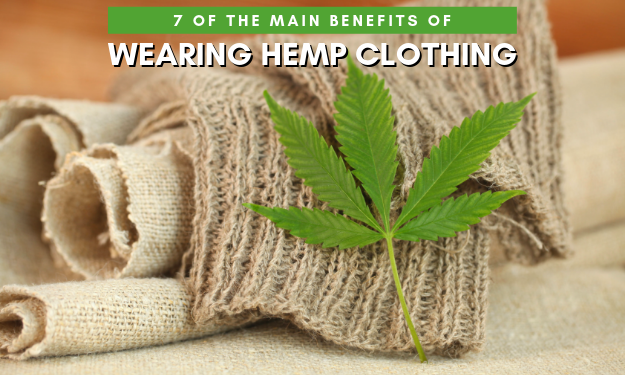Excellent Facts For Selecting Hemp Clothes
Wiki Article
Why Is It That Hemp Is Stronger, More Durable, And More Biodegradable Than Cotton?
Hemp is generally regarded to be more biodegradable, durable, and more regenerative than cotton because of its natural properties and the manner in which it is grown. Here's why- Biodegradability-
Natural Fiber Natural Fiber Hemp is an organic plant fibre which is biodegradable. When discarded, hemp clothing and textiles are broken down naturally, and then return to the environment without generating long-lasting garbage. This is in contrast with synthetic fibres, such as polyamide that can break down over hundreds of decades.
The absence of synthetic additives Hemp textiles usually do not have synthetic additives or chemical treatments that inhibit biodegradability. In contrast, some cotton textiles are treated with synthetic chemicals, such as certain finishes or dyes, which may hinder the process of biodegradation.
Durability-
Hemp fibers have earned a reputation for strength and durability. Hemp clothing, textiles, and other items are more durable than cotton. Hemp clothing is durable and can be washed more often before showing signs of wear.
less prone to Pillingless prone to pilling Hemp fabrics are less prone to pilling (the formation of small fuzzy balls on the fabric's surface) compared to cotton. This attribute contributes their longevity and quality.
Regenerative Agriculture-
Soil Quality Hemp has regenerative characteristics when it is grown sustainably. Hemp is a plant with roots that are deep, which helps to prevent soil erosion and compaction. It also can enhance soil health through aerating and enhancing microbial activities. This regenerative feature could make the soil more suitable for future crops.
Low environmental impact. Sustainable hemp production methods tend to be characterized by a low level of pesticide and weedicide use. This minimizes environmental harm. The cultivation of cotton, which is based on synthetic chemicals may result in soil degradation and water pollution.
Water Efficiency-
Hemp typically requires less cotton to develop. Because of its drought-resistant qualities, hemp can grow with very little irrigation or rainfall. This makes it more water-efficient especially in areas where water resources are in short supply.
Hemp can also be included in the crop rotation system to improve soil health, decrease the risk of disease and reduce depletion. Crop rotation in cotton farming is not as frequent.
Hemp has plenty of versatility. It is able for a wide range of products like clothing, paper, building material, and textiles. This implies that hemp cultivation could be used to support a variety of industries using sustainable and sustainable methods.
Alongside these benefits of hemp, it's essential to know that hemp as well as cotton are produced sustainable (or not) dependent on the techniques used in farming and processing methods. Choose hemp products produced with eco-friendly, ethical practices to maximize the environmental benefits. The use of organic cotton is also a way to reduce environmental concerns that are associated with conventional production. View the best hemp clothes blog for blog info including hemp mens jeans, hemp active wear, patagonia double knee pants, hemp swimsuit, hemp swimsuit, patagonia hemp jacket, hemp and cotton fabric, hemp jeans mens, hemp wear, womens hemp clothing and more.

What Are The Benefits Of Hemp Fibers In The Sequestration Of Carbon, Sustainability And Crop Rotation?
Hemp fibers contribute to carbon storage, sustainability, and crop rotation in many ways. This makes them an excellent choice for textile and agricultural production.
Hemp has a rapid growth rate. It matures between 70 to 120 days, based on the hemp type and the conditions under which it grows. During the rapid growth phase hemp plants absorb carbon dioxide (CO2) from the atmosphere in order to photosynthesis. The carbon absorption process can aid in the carbon dioxide sequestration and reduce levels of CO2 in the atmosphere.
Hemp's high biomass production is well-known. The tall stalks and dense leaves produce an abundance of organic matter. When this biomass is integrated into the soil or used for various applications, it can contribute to the buildup of organic carbon in the soil, further sequestering carbon.
Sustainability:
Hemp is grown using less chemicals than cotton or other crops. The natural resistance of hemp to insects and diseases minimizes the need for chemical intervention. The organic hemp industry in particular emphasizes sustainability through the avoidance of synthetic chemicals.
Hemp can be irrigated using only a small amount of water, in contrast to traditional cotton, which is water-intensive. This makes it more durable in areas with limited water resources.
Hemp's deep-rooted system is able to improve the health of soil. His roots can help prevent soil erosion by stabilizing soil structure and reducing runoff. Hemp farming can boost soil microbial activity, increasing soil fertility and nutrient cycle.
Hemp is a great crop to incorporate into rotational systems. Crop rotation is a technique that involves rotating different crops in the same area. This technique can end the cycle of disease and pests decrease soil loss and improve the soil's structure. Hemp is a great crop to rotate and its role contributes to sustainable farming practices.
Crop Rotation-
Diversification- Hemp can be incorporated into crop rotation systems alongside other crops such as legumes, grains, or vegetables. This helps farmers to maintain the quality of their soil, reduce the risk for pests, diseases and other issues related to crops, and promote a balanced cycle of nutrients.
Hemp’s deep roots penetrate soil and aerate it which reduces compacting and increases water infiltration. The improved soil structure after hemp cultivation benefits subsequent crops.
In the end, hemp fibers improve carbon sequestration, sustainability, and crop rotation practices due to their rapid development, production of biomass, minimal chemical requirements, high water efficiency, positive impact on soil health, and compatibility with crop rotation methods. These attributes make hemp production an environmentally sustainable and regenerative agricultural practice. The resultant fibers are suitable for use in textiles and other environmentally friendly applications. Take a look at the top recommended reading on hemp clothing for site examples including hemp tees, women's all seasons hemp canvas bomber hoody jacket, organic hemp hoodie, hemp textiles, patagonia hemp overalls, hemp fabric, hemp apparel fabric, hemp apparel, hemp fleece fabric, patagonia hemp overalls and more.

What Are The Benefits Of Wearing Bamboo Clothing When It Comes To Eco-Friendliness And Comfort?
Bamboo clothing has many advantages when it comes to both environmental sustainability and comfort.
Softness Bamboo fabric is recognized for its extraordinary softness. It is silky smooth texture that is a pleasure to touch. Bamboo clothing is extremely soft and popular for activewear, loungewear, intimate apparel, and different kinds of clothes.
Breathability Bamboo fibers naturally breathable and moisture wicking. Micro-gaps permit air circulation, keeping you cool in hot weather. Moisture-wicking fabrics help draw sweat away off your skin, and also reduce the feeling of dampness.
Bamboo clothing is great for thermoregulation. It will keep you warm when temperatures drop by retaining the heat near to your skin. In warmer weather, it helps you stay cool by allowing heat and moisture to escape. This ability to adapt clothes to the temperature of the day allows it be worn all through the year.
Hypoallergenic- Fabric that is made of bamboo is gentle and hypoallergenic. It is less likely to trigger allergies or irritation, making it a suitable choice for individuals who have skin sensitivities, allergies or.
Bamboo fibers are able to resist to odors thanks to their antimicrobial nature. This helps bamboo clothing to remain fresh after exercise.
Environment-
Sustainability Bamboo is a sustainable and renewable source. It is one of the fastest-growing plants in the world and requires minimal water and the use of herbicides and pesticides in cultivation. Bamboo is harvested without killing it as its root system regenerates.
Bamboo is naturally water efficient. Bamboo can flourish with little irrigation, and is often grown using rainwater alone, reducing the environmental impact that comes with the use of water in agriculture.
Biodegradability. Bamboo clothes will naturally decay as time passes if it is removed. This decreases the amount of nonbiodegradable textiles that end in the garbage dumps.
Carbon Sequestration- Bamboos capture carbon dioxide (CO2) from the atmosphere during their rapid expansion. Bamboo cultivation acts as an absorber of carbon dioxide, reducing the levels of greenhouse gases and aiding in reducing climate change.
Chemical Reduction The bamboo fabric is made with fewer chemical treatments than other textiles. This minimizes the impact on the environment of textile production.
Closed-Loop Systems Bamboo fabric production employs closed-loop processes that reuse water and chemical. This minimizes waste and pollution.
Be aware that the effects of bamboo clothes on the environment could differ depending on the type of manufacturing process employed and the source of bamboo used and sustainably from the bamboo forest. Bamboo clothing that is produced using environmentally friendly practices will give the greatest environmental benefit. Check out the best bamboo clothes url for site recommendations including bamboo family pajamas, ladies bamboo pants, boody ecowear, lisa frank bamboo pajamas, bamboo infant clothing, halloween bamboo pajamas, bamboo mens shirts, bamboo exercise clothing, bamboo material clothing, cotton bamboo pajamas and more.
